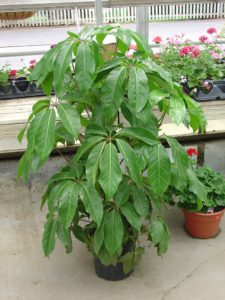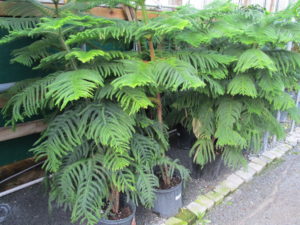The final days are summer are over. It’s time to move your tropical plants indoors before night temps in the low 40°F arrive. These plants thrive outdoors in summer temperatures and high humidity, but cannot survive being left outdoors. Container plants such as Ficus (rubber) trees, orchids, Norfolk Island pines, scheffleras, bromeliads, gardenias, palms, and lots more should be brought indoors. Cacti and succulents have probably doubled in size in the humid summer air and may need to be repotted.
Inspect and eliminate all bugs and diseased leaves before bringing plants into your home. Apply an insecticide labeled for houseplants. Insecticidal soaps are quite effective both inside and outside the home. Do not spray pesticides like malathion and diazinon indoors. Target aphids, mites, mealy bugs, and scales. Also inspect for freeloaders or nuisance pests such as earwigs, boxelder bugs, sowbugs, ants, and squash bugs which often hide on the bottom of pots. Some of these bugs multiply like crazy once they get inside your home.
If you have a garage or breezeway that receives filtered sunlight, move the plants into this halfway shelter for a week or two to acclimated to the lower light conditions indoors. Once inside, a room with a south- or east-facing window is ideal for most tropicals, although desert plants like cacti are best set in a west-facing window.
Put your plants on a diet, e.g. from fertilizer and water. Light levels are reduced and room temperatures are cool (65 to 72°F) through fall and winter seasons. Water plants every 7-10 days and mist tropicals every day to raise room humidity.



 Posted in
Posted in 
